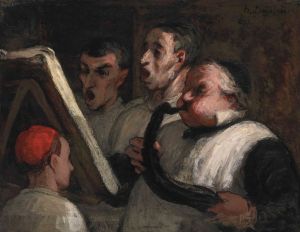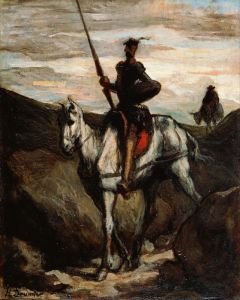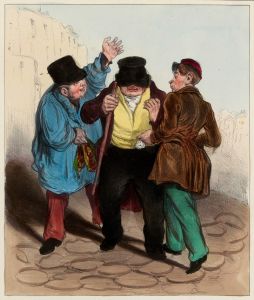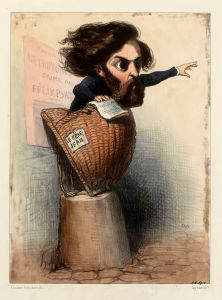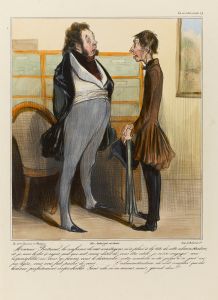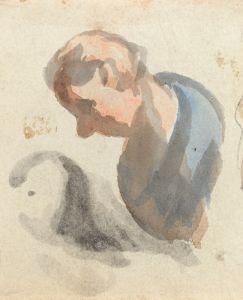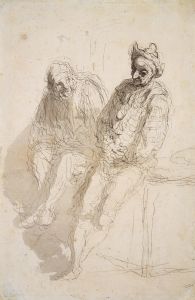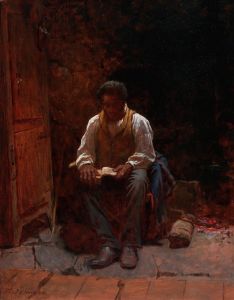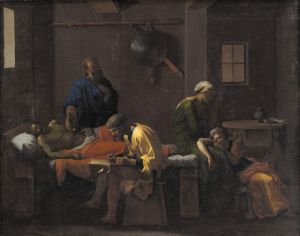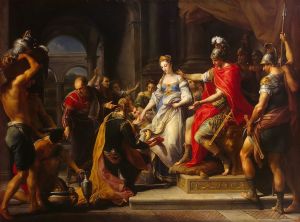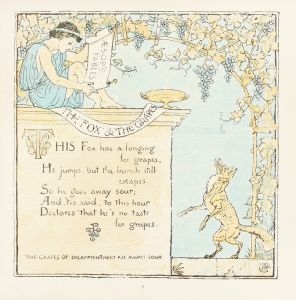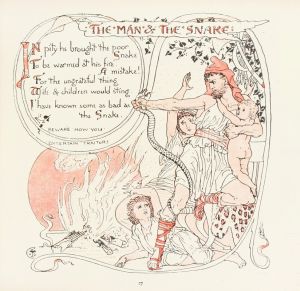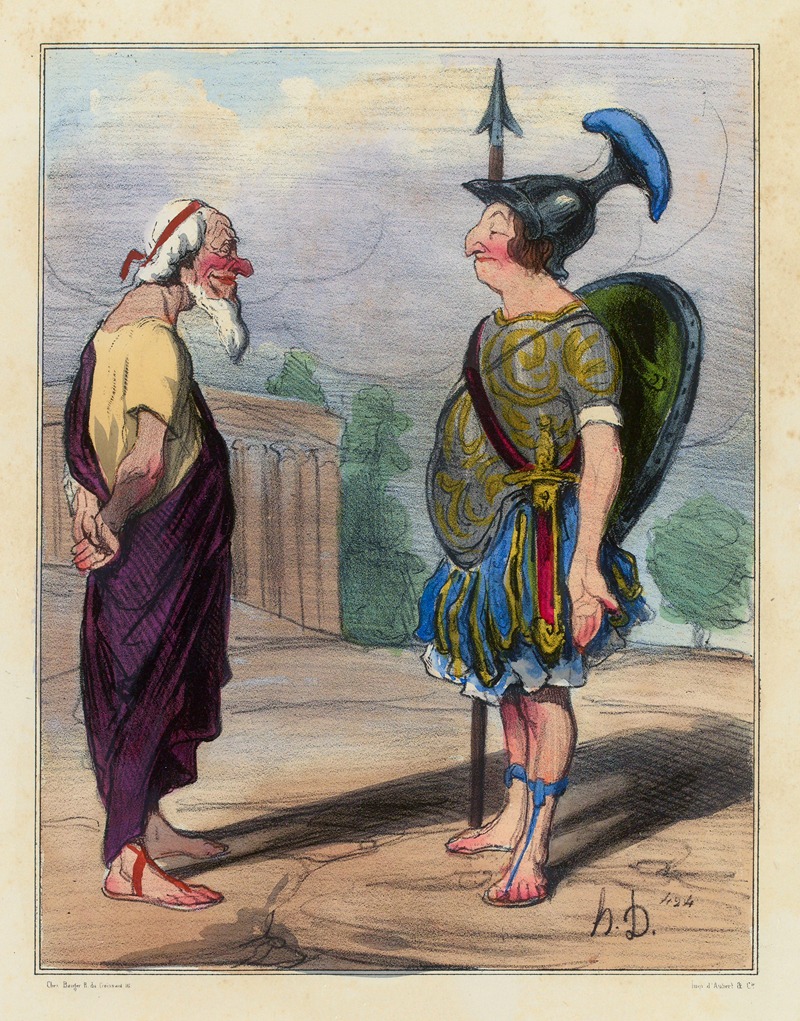
Télémaque rendu à la vertu
A hand-painted replica of Honoré Daumier’s masterpiece Télémaque rendu à la vertu, meticulously crafted by professional artists to capture the true essence of the original. Each piece is created with museum-quality canvas and rare mineral pigments, carefully painted by experienced artists with delicate brushstrokes and rich, layered colors to perfectly recreate the texture of the original artwork. Unlike machine-printed reproductions, this hand-painted version brings the painting to life, infused with the artist’s emotions and skill in every stroke. Whether for personal collection or home decoration, it instantly elevates the artistic atmosphere of any space.
Honoré Daumier, a prominent French artist known for his caricatures, paintings, and sculptures, created a work titled "Télémaque rendu à la vertu." Daumier, who lived from 1808 to 1879, was a prolific artist whose works often contained social and political commentary reflective of 19th-century France. However, specific information about the painting "Télémaque rendu à la vertu" is scarce, and it is not one of Daumier's most widely recognized works.
Daumier's oeuvre is extensive, with a significant portion dedicated to lithographs and caricatures that appeared in newspapers such as "La Caricature" and "Le Charivari." His art often critiqued the political climate of his time, targeting figures of authority and the bourgeoisie. While Daumier's paintings are less numerous than his lithographs, they still reflect his keen observation of human nature and society.
"Télémaque rendu à la vertu" translates to "Telemachus Returned to Virtue." The title suggests a reference to the character Telemachus from Greek mythology, specifically from Homer's "Odyssey." Telemachus is the son of Odysseus and Penelope, and his story is one of growth, maturity, and the search for his father. The title implies a narrative of moral or virtuous return, possibly aligning with themes of redemption or moral awakening.
Daumier's style is characterized by its expressive use of line and form, often capturing the essence of his subjects with a few bold strokes. His paintings, though less known than his prints, exhibit a similar dynamism and attention to the human condition. They often portray scenes of everyday life, imbued with a sense of realism and empathy for the common people.
Despite the lack of detailed information on "Télémaque rendu à la vertu," it is reasonable to infer that the work might explore themes consistent with Daumier's broader artistic concerns. These include the struggles of the individual against societal pressures, the folly of human nature, and the quest for personal integrity.
Daumier's impact on the art world extends beyond his lifetime, influencing later artists such as Vincent van Gogh and Pablo Picasso. His ability to capture the spirit of his age with both humor and pathos has cemented his place in art history as a master observer and commentator of human life.
In summary, while specific details about "Télémaque rendu à la vertu" are limited, Honoré Daumier's body of work provides context for understanding the potential themes and stylistic approaches he might have employed in this painting. His legacy as an artist who deftly combined social critique with artistic innovation remains influential to this day.






